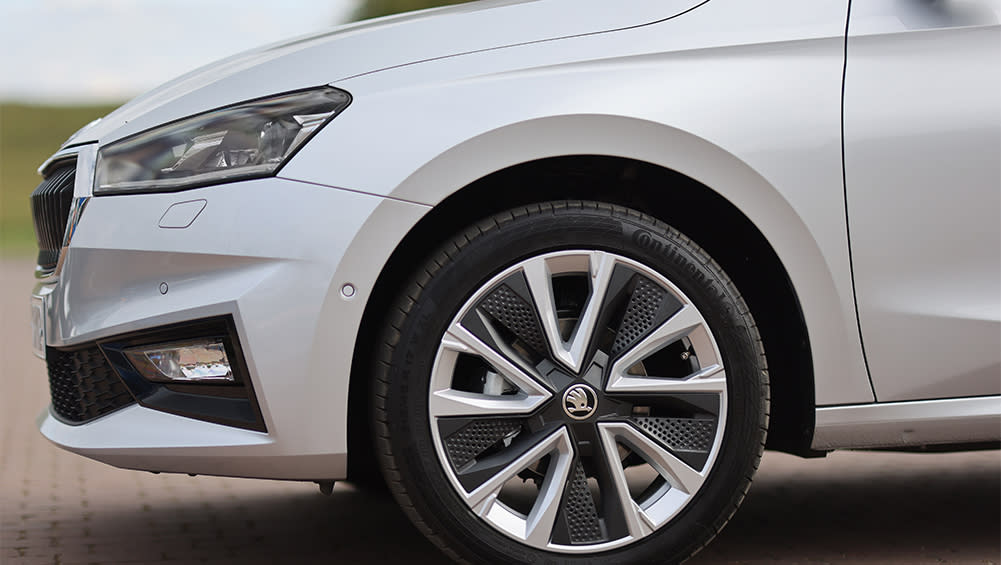Europe’s cheapest car will live on in Australia – for now.
While the Skoda Scala’s future hangs in the balance due to shifting buyer preferences, plunging sales and a new-model onslaught that includes value EVs like the coming Epiq, its Fabia kid brother is treading just enough water to justify continuing importation.
In fact, the expected RS hot hatch version that is currently doing both the rounds of the rumour mill as well as the Nürburgring in Germany, could even lead the charge when next year’s Fabia facelift is announced.
・Europe’s blow to China: The desirable sub-$40K electric SUV headed to Australia
・Skoda steps up! Volkswagen Group engine development to be led by Czech brand, covering “50 models over seven brands”
・Euro hatch for the chop? Struggling Hyundai i30, Mazda3 and Toyota Corolla rival “under investigation” for continued presence in Australia
For now, though, with the current Fabia Select grade beginning from $29,990 drive-away, the hope is that the series will recover.
“Currently we are considering one model (to cull), if it’s, let’s say, worse, to offer it consistently in the market,” according to Skoda Australia Director, Lucie Kuhn.
“But, in general, the portfolio actually delivers the substance to the brand, to deliver the volume and to level up the volume.”
When pressed on whether that would be the Scala or the Fabia, which is only down by 15 per cent year-to-date and has managed a more-robust 210 units year-to-date in Australia, Kuhn’s response was more direct.
“That would be the Scala,” she clarified.
With fewer than 100 units sold and volume down by over 60 per cent year-to-date, the Scala has failed to find friends in a small-car segment that has fallen by over 25 per cent alone in 2025.
But while Skoda Australia will retain the Volkswagen Polo-based supermini for the time being, sales will need to step up to pre-Covid 19 levels.
Its year-to-date registration numbers remain dangerously low, especially compared to premium alternatives of similar size like the related Audi A1 (297) and Volkswagen Polo (578), as well as Mini’s Cooper and Aceman twins (483 and 1525 units respectively).
The core issue is the Fabia has suffered from inflated pricing since the latest (fourth-generation) model arrived in 2022, initially in range-topping Monte Carlo guise that edged it towards $40,000 drive-away.
For context, the previous (base grade) iteration started from $21,990 drive-away just the year before in runout mode. The result saw a 66 per cent sales nosedive, from 813 to only 276 units in 2022. The cheaper Select grade out from early last year saw a small recovery to 331 buyers.
According to Kuhn, that sort of pricing approach will no longer apply if Skoda Australia is to realise its goal of breaking beyond the 10,000 annual sales barrier. Last year saw a 37 per cent volume drop, from 8000 units to a tad over 5000.
“To go for the 10,000 we, of course, had to re-evaluate and reassess our portfolio,” she said. “So, we did it, not only with the electrical cars, but also with the (internal combustion engined) cars, where we actually, in the last eight months, did some homework on our side, and we developed a pricing that is more meeting the customer’s demand.
“We will get back to the customers’ expectations, what the customers expect to pay for the Skoda brand.”
Launched in Australia in September, 2011 (when the Light car class was over 18 per cent instead of today’s measly 2.5 per cent share of the total market), the Fabia gained a small but consistent following amongst Euro supermini aficionados, building up to a career-best 983 registrations in 2017.
Annual sales largely hovered over the 800 mark from 2016 through to the release of the existing model.
The original Fabia was launched in Europe in 1999 as a replacement for the pre-VW-era Favorit/Felicia series.
